In the past century, Las Vegas has transformed from a small train stop in the desert to the "Entertainment Capital of the World" — but how did it happen?
The history of Las Vegas as a city starts when it was officially founded in 1905, but its story begins long before that. Thousands of years ago, the Nevada desert was home to Native American tribes. And throughout the 19th century, Mexican, Spanish, and American pioneers explored and sometimes settled in the region.
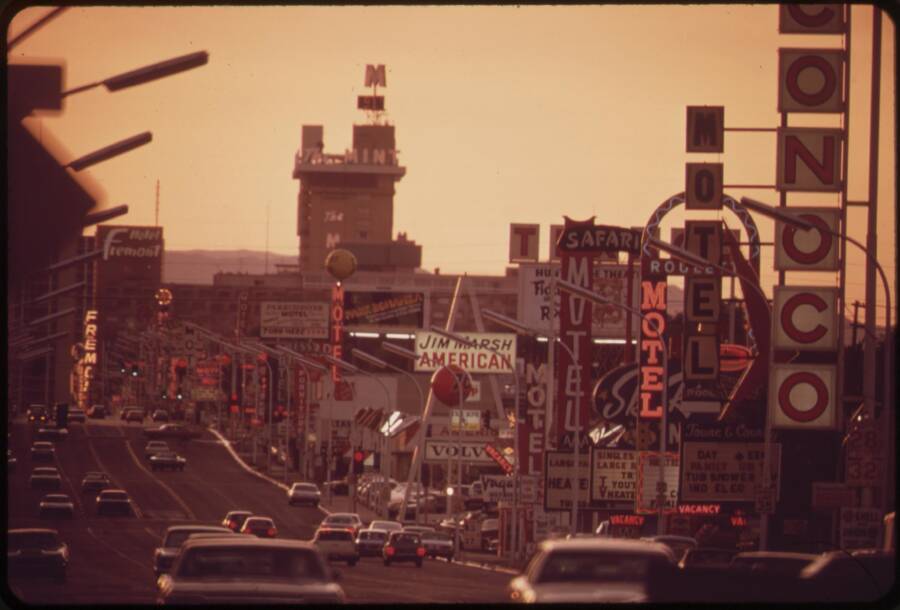
U.S. National ArchivesFremont Street in Las Vegas in 1972.
Then, at the dawn of the 20th century, a railroad linked Las Vegas with the rest of the country. However, the spark that transformed the city into the “Entertainment Capital of the World” was the legalization of gambling in Nevada in 1931.
By the 1940s, Mob money had made its way to Vegas. Casinos backed by gangsters like Meyer Lansky and Bugsy Siegel provided both an additional stream of income and an easy way to launder ill-gotten gains.
Las Vegas was eventually bought out by mega-corporations, which razed the vintage hotels and built sprawling resorts in their place. Today, “Sin City” attracts some 40 million tourists each year — and its popularity only continues to grow.
The Early History Of Las Vegas As A Quiet Desert Town
Some 10,000 years before Las Vegas became known as Sin City, it welcomed the nomadic tribes that first inhabited the North American continent. Later, Indigenous groups like the Anasazi and the Paiute called the area home.
Mexican scout Rafael Rivera is believed to have been the first non-Native American to enter Las Vegas Valley. He ventured through the area in January 1830, and explorer John C. Frémont followed his path 14 years later, officially mapping the Old Spanish Trail. Fremont Street was later named after the trailblazer.
Then, in 1855, members of the Church of Jesus Christ of Latter-day Saints arrived and built a fort. This structure was meant to serve as a halfway point between Salt Lake City and Los Angeles. Though Old Mormon Fort was abandoned only a few years after its construction, its ruins still stand today as a tangible reminder of early Las Vegas history.
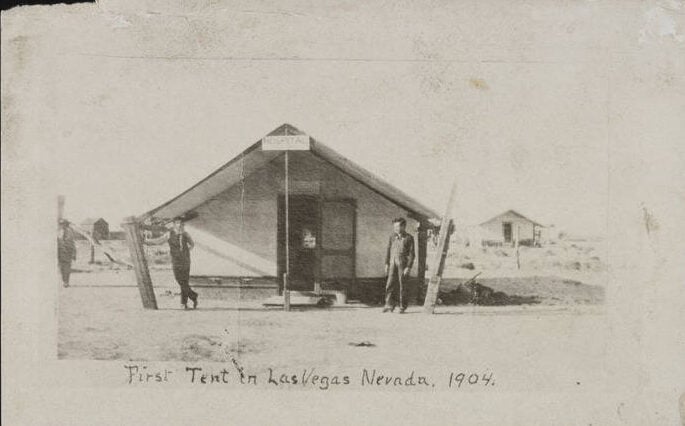
University of Nevada Las Vegas Special CollectionsA tent erected in Las Vegas in 1904, a year before the city’s founding.
The next major development came in 1905 when the city was officially founded as a railroad connecting Salt Lake City and Los Angeles was completed. For years, Las Vegas was simply a stopover town for passengers traveling between the two bigger cities — but soon, it was a bustling metropolis in its own right.
How Gambling Transformed The History Of Las Vegas
By 1931, Nevada — like everywhere else in the United States — was facing economic hardship as a result of the Great Depression. The state government decided to legalize gambling in an effort to attract new residents and tourists and bring in tax revenue.
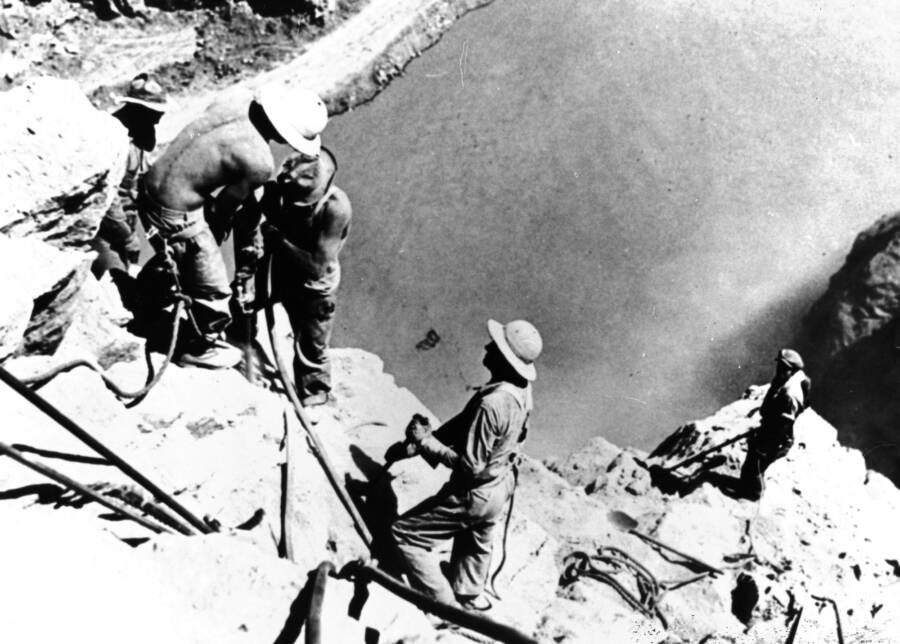
U.S. National ArchivesLaborers drill into the canyon wall high above the Colorado River in the early stages of the construction of the Hoover Dam in 1932.
That same year, construction of the Hoover Dam began nearby, and men looking for work flocked to the area. After long days of labor, they blew off steam at Vegas’s newly legal casinos, and more and more gambling houses began popping up.
In 1941, the first hotel-casino, El Rancho Vegas, opened on what would soon become known as the Vegas Strip. Five years later, mobster Bugsy Siegel opened the Flamingo, the first luxury resort in Vegas. Siegel aimed to transform the city into a glamorous destination, moving it away from the Old West history of Las Vegas that many of the hotels and casinos still embraced.
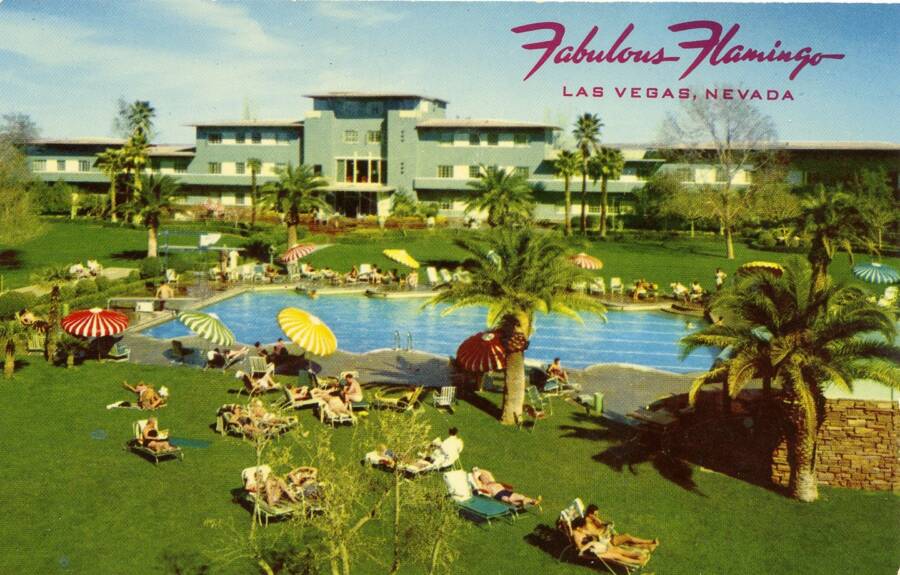
Nevada State MuseumA vintage postcard displaying the Flamingo Hotel and Casino.
Other gangsters soon saw the opportunity that Vegas offered — such as an easy way to launder their illicitly gained money. Before long, the Mob was running Sin City. More resorts backed by Mafia money were built along the Strip, such as the Sands, the Dunes, the Riviera, and the Tropicana. These opulent hotels boasted performances by some of the biggest stars of the 1950s, helping transform Las Vegas into the “Entertainment Capital of the World.”
Las Vegas Becomes The ‘Entertainment Capital Of The World’
Just 20 years after gambling was legalized in Nevada, Las Vegas had established a reputation not only as a hub for casinos but also for popular entertainers like Frank Sinatra, Elvis Presley, and Liberace. The city’s golden age had arrived.
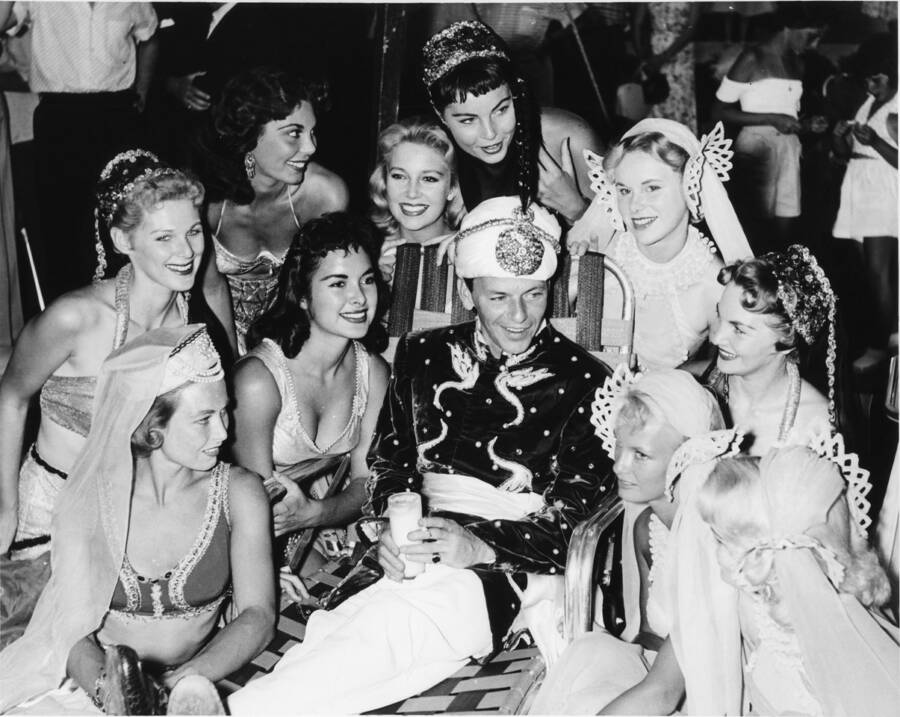
Nevada State MuseumFrank Sinatra with showgirls at the Dunes circa 1955.
Sinatra first played at Desert Inn in 1951, and by the end of the decade, he was one of the city’s top attractions. “He was actually the king of Las Vegas, because the minute he stepped into town, money was here,” said lounge singer Sonny King, according to a 1999 article in the Las Vegas Review-Journal. “He drew all the big money people. Every celebrity in Hollywood would come to Las Vegas to see him, one night or another.”
Rat Pack members Dean Martin, Sammy Davis Jr., Peter Lawford, and Joey Bishop also drew crowds. And Liberace pioneered the idea of a Vegas residency. In the mid-1950s, he was making $50,000 per week performing at the Riviera.
However, it was Elvis Presley who became the most beloved artist in Las Vegas history. The King of Rock ‘n’ Roll played 636 sold-out shows at the International Hotel between 1969 and 1976. His electric performances directed the city down a new path. Instead of the more traditional shows the older generations had enjoyed, Las Vegas hotels and casinos became home to flashy concerts.

Collection Christophel / Alamy Stock PhotoElvis and Priscilla Presley wed at the Aladdin Hotel in Las Vegas in 1967.
“Elvis signaled an important change in Las Vegas,” former mayor Oscar Goodman told Billboard in 2015. “Elvis bridged the gap between the Frank Sinatra/Rat Pack years and what you see today — big names, big shows, big packed houses. More than any other performer, Elvis set the tone.”
However, Elvis’ reign in Vegas also spanned another major change in the city. The International Hotel where he performed had been opened in 1969 by billionaire Kirk Kerkorian. It was the largest in the country at the time — and it marked the beginning of Vegas’s transformation into a city run by mega-corporations.
Las Vegas In The Modern Age
The first mega-resort in Vegas was the Mirage, which opened in 1989. But by the end of the 1990s, many of the most famous hotels in Las Vegas’s history had been bought out by large companies, destroyed, and replaced with towering skyscrapers.
The Sands, where Frank Sinatra and the Rat Pack famously performed in the Copa Room, was demolished and replaced by the Venetian. The Bellagio took the place of the Dunes, and the Hacienda was imploded in front of a crowd on New Year’s Eve 1996 so the 3,200-room Mandalay Bay could be built on the site.
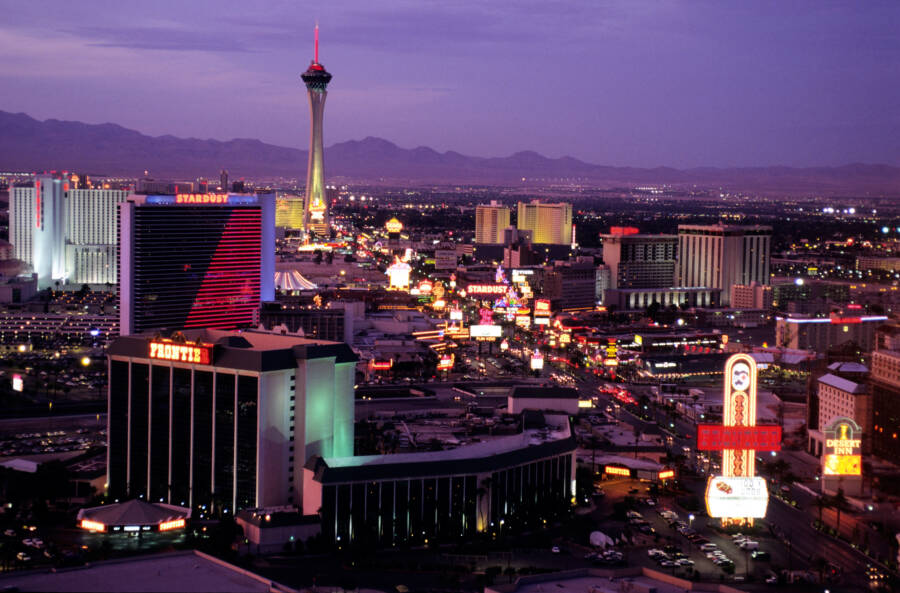
Hemis / Alamy Stock PhotoThe Las Vegas Strip in 1998.
Today, Las Vegas is the 24th most populated city in the United States, and it boasts a “fun economy” of gambling, entertainment, and sports worth $13.7 trillion. The city also attracts 40 million tourists each and every year. It’s a far cry from the dusty town of 2,500 people that it was just a century ago.
Indeed, Las Vegas truly is Sin City, a place where money talks and the entertainment is endless. American novelist Charles Baxter summarizes the essence of Vegas well:
“Vegas is a series of winks. The wink between you and the dealer, the wink between you and the showgirl, the wink between you and yourself.”
After reading about the history of Las Vegas, dive into the story of California City, the town that was meant to rival Los Angeles. Then, go inside the rise and fall of Las Vegas’s East Coast counterpart, Atlantic City.





